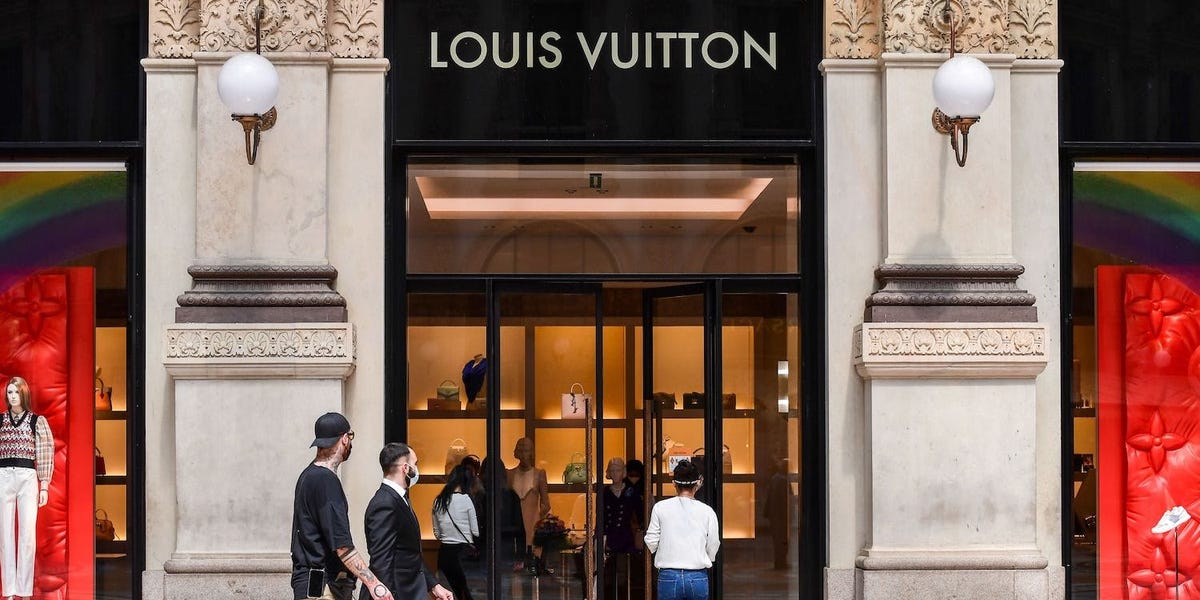- US consumers earning less than $100,000 fueled record profits last year for French luxury group LVMH.
- These “aspirational” customers are now pulling back on spending as pandemic cash reserves run dry.
- Important as these shoppers are, don’t expect to see huge markdowns from Louis Vuitton and Dior.
Most retailers will do almost anything to encourage customers to come back and buy more products, especially when those shoppers begin to tighten their purse strings.
Typical strategies include bigger ads, deeper discounts, cheaper merchandise, and more, chasing after a shrinking pool of consumer spending.
But that’s not how French luxury conglomerate LVMH does business.
The powerhouse behind Louis Vuitton, Christian Dior, Tiffany, and over a dozen other iconic luxury brands was one of the largest beneficiaries of a pandemic-era boom in “aspirational” spending from US shoppers earning less than $100,000.
Flush with surplus cash, these middle-income shoppers splurged on handbags and perfumes, propelling LVMH to record profits last year.
This year however, high inflation, increasing economic uncertainty, and dwindling cash reserves have led most US consumers to think twice about what they spend and where they spend it.
“The aspirational customer is suffering a bit,” LVMH CFO Jean-Jacques Guiony said on the company’s earnings call Tuesday, citing lower sales online and in “second-tier cities.”
While big-box stores are stepping up with markdowns to boost sales, that approach would spell disaster for a luxury brand, which needs to preserve an image of exclusivity and rarity.
“Extensive discounting to stimulate sales is never a good idea as while it can provide a short-term boost, it usually causes long-term damage to the brand which becomes more ubiquitous,” GlobalData retail analyst Neil Saunders told Insider.
Saunders highlighted Coach and Michael Kors as brands who have spent several years now rebuilding their cache after wading too far into the mainstream.
Even as the company hands the reins over to a younger generation and expands its reach, Guiony said: “All our energy is focused on increasing the desirability of the brands.”
And desirability is rarely found in the bargain bin.
Still, even though chasing after “aspirational” customers would be bad for LVMH’s business, neither can the brand run away from them and into the arms of the ultra-wealthy.
“It’s a myth that a lot of the revenue stream comes from high earners,” retail industry expert and consultant Hitha Herzog told Insider. “Their bread and butter are products at lower price points, like sunglasses, wallets, and perfumes, that really target the aspirational customer.”
Herzog also pointed out that the breadth of LVMH’s geography and brand portfolio puts the company in a more secure position to ride out dips and changes in buying behaviors.
Falling US handbag sales can be offset by gains in Asia; fewer bottles of cognac can be compensated with more bottles of champagne.
So what’s a luxury house to do?
If the earnings call is any evidence, the answer is lots of advertising and a few blockbuster events to get the brands’ message out and burnish the image.
Guiony said a marketing blitz leading up to a mega-budget fashion show on the Pont Neuf in Paris with musician-turned-designer Pharrell Williams pulled in over a billion views for Louis Vuitton.
“The cost of all these initiatives was obviously quite high,” Guiony said. “It’s quite extraordinary in my view and worth the investment.”
Not every luxury brand can pull this strategy off, but it appears LVMH certainly can.
Read the full article here





